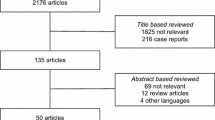Structured abstract
Question
Does vasodilatation in symptomatic patients with severe aortic stenosis and congestive heart failure improve cardiac index?
Design
Prospective, non-randomized, non-blinded trial. Patients, physicians, and nurses were aware of treatment regimens.
Setting
Cardiac Intensive Care Unit at the Cleveland Clinic Foundation from August 1, 2000 to May 15, 2002.
Patients
29 consecutive patients met the inclusion criteria for the study. Four patients had hypotension and were excluded. Twenty-five patients began the study. One patient underwent aortic valve replacement before the 24-hr time point and was included in all the analyses except the 24-hr subgroup analysis. The inclusion criteria were: admission to an intensive care unit for invasive hemodynamic monitoring of heart failure; depressed left ventricular function (LVEF < 35%); severe aortic stenosis (aortic valve area = 1 cm2 on echocardiography); and a depressed cardiac index (< 2.2 L· min−1 · m−2), as determined by the Fick method. The only exclusion criteria was hypotension, defined as either the need foriv vasopressor agents or a mean systemic arterial pressure (MAP) below 60 mmHg.
Intervention
All patients underwent continuous electrocardiogram (ECG) and invasive hemodynamic monitoring with pulmonary-artery catheter and arterial catheters. Heart rate, blood pressure, ECG findings, and cardiac hemodynamic variables were recorded at baseline. Nitroprusside was titrated to maintain a MAP between 60 and 70 mmHg; the exact dose was determined by the cardiologist. Nitroprusside was started at a dose of 14 ± 10 μg · min−1 (mean ± standard deviation or 0.2 ± 0.14 μg · kg−1 · min−1 for 70-kg subjects), increased to 103 ± 67 μg · min−1 (or 1.47 ± 0.96 μg · kg−1min−1 for 70-kg subjects) after six hours and further increased to 128 ± 96 μg · min−1 (or 1.83 ± 1.37 μg · kg−1 · min−1) after 24 hr. After six and 24 hr of nitroprusside infusion, heart rate, blood pressure, and cardiac hemodynamic variables were again recorded. All echocardiographic data was obtained by an experienced sonographer and read by a blinded experienced cardiologist. Patients were stratified by aortic valve gradient pressures into low-gradient (mean gradient; ≤ 30 mmHg,n = 11) and high-gradient (mean gradient; > 30 mmHg,n = 13) groups.
Main outcomes
The effect of nitroprusside on the cardiac index was the primary end-point. Secondary end-points included heart rate, MAP, pulmonary-capillary wedge pressure, systemic vascular resistance, and stroke volume. Recorded adverse events were hypotension (MAP < 60 mmHg), angina, evidence of new ischemia on ECG, acute renal failure, dyspnea, or arrhythmias.
Main results
The group mean ± standard deviation baseline LVEF was 21 ± 8%, aortic valve area 0.6 ± 0.2 cm2, cardiac index 1.60 ± 0.35 L · min−1 · m−2, with peak and mean aortic valve pressure gradients of 65 ± 37 and 39 ± 23 mmHg. The cardiac index increased to 2.22 ± 0.44 L · min−1 · m−2 at six hours (P < 0.001) and to 2.52 ± 0.55 L · min−1 · m−2 at 24 hr (P < 0.001). Compared to baseline, there was a significant decrease in MAP, pulmonary capillary wedge pressure, pulmonary vascular resistance, pulmonary artery systolic pressure, and systemic vascular resistance at six and 24 hr. Right ventricular stroke volume had significantly increased at six and 24 hr. Heart rate did not change. There were similar increases in cardiac output with and without coronary artery disease, significant mitral regurgitation, and highvs low grade aortic stenosis. In a subgroup of six patients, nitroprusside significantly (P = 0.03) increased mean (37 ± 20vs 60 ± 30 mmHg) and peak aortic valve pressure gradients (64 ± 37vs 100 ± 53 mmHg) after 24 hr, with no significant difference (P = 0.99) in aortic valve area (0.6 ± 0.1 cm2). Baseline creatinine decreased from 159 ± 80 umol · L−1 to 141 ± 80 μmol · L−1 after 24 hr (P = 0.04). One patient developed chest pain and one patient developed contrast nephropathy. There were no episodes of dyspnea, ischemic ECG changes, arrhythmias, or hypotension. All patients continued to receive nitroprusside until surgery, conversion to maintenance medical therapy, or death. Five patients died (two withdrawal of care, one multi-organ failure, one pulmonary embolism, one palliative comfort measures requested by family), 13 had aortic valve replacement, one had coronary artery bypass grafting (no aortic valve replacement as the annulus was too small), one balloon aortic valvuloplasty, and medical therapy in the remaining six patients. At 30 days, overall survival was 76%.
Conclusion
Nitroprusside in patients with severe aortic stenosis and reduced ejection fraction is a safe and effective bridge to more definitive surgical or medical treatment.
Funding
One investigator reported receiving funding for lecture fees.
Similar content being viewed by others
References
Barash P, Cullen B, and Stoelting R. Clinical Anesthesia, 3rd ed. Lippincott-Raven Publishers; 1997: 841–4.
Aronow WS, Ahn C, Kronzon I, Nanna M. Prognosis of congestive heart failure in patients aged > or = 62 years with unoperated severe valvular aortic stenosis. Am J Cardiol 1993; 72: 846–8.
Khot UN, Novaro GM, Popovic ZB, et al. Nitroprusside in critically ill patients with left ventricular dysfunction and aortic stenosis. N Engl J Med 2003; 348: 1756–63.
Konstadt S, Shernan S, and Oka Y. Clinical Transesophageal Echocardiography, 2nd ed. Lippincott-Williams and Wilkins; 2003: 97–100.
Costachescu T, Denault A, Guimond JG, et al. The hemodynamically unstable patient in the intensive care unit: hemodynamic vs. transesophageal echocardiographic monitoring. Crit Care Med 2002; 30: 1214–23.
Author information
Authors and Affiliations
Rights and permissions
About this article
Cite this article
Skjodt, N.M., Townsend, D.R. Best evidence in critical care medicine Treatment: Vasodilatation with nitroprusside in symptomatic patients with severe aortic stenosis and congestive heart failure improves cardiac index. Can J Anesth 51, 1042–1044 (2004). https://doi.org/10.1007/BF03018495
Published:
Issue Date:
DOI: https://doi.org/10.1007/BF03018495




